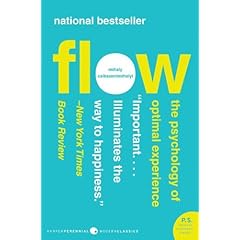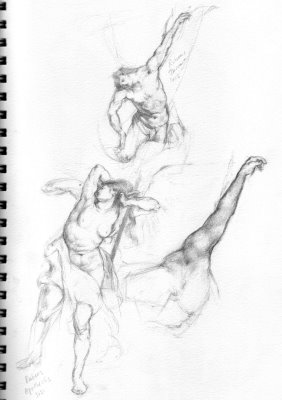Book Report: "Guido Reni" by Pepper
 Wednesday, March 11, 2009 at 1:42AM
Wednesday, March 11, 2009 at 1:42AM A Complete Catalogue of his Works
with an Introductory Text
by D Stephen Pepper
I had always been taught to admire Caravaggio above all others of this era for his earthiness and "realism", and that it was due to the limitations of the times that his paintings were considered scandalous for his depictions of dirty feet, dead corpses and shadowed figures. But this essay by Pepper helped me understand the reaction to his paintings in the light of the times.
In the early 17th century there was an inherent tension between the concepts of heaven and earth, as neither was thought to be any less real than the other. The duty of painting was to be a visual philosophy, depicting ideas above all else. And so the way drapery and figures were treated in painting were at the time a visual discourse on ideas about the nature and order of the universe. Painting itself was seen as powerful enough to actually transform the soul of the person viewing it, so the job of the painter was nothing less than to elevate the souls of his viewers.
Caravaggio's work was scandalous not for the technique, but for the ideas. Instead of making paintings that elevate and educate, Caravaggio did not show the tension between planes of experience. To him a dead figure should be painted to appear truly dead in every way (appealing in our own era, but not the goal of the times). To do this was seen as denying the possibility of resurrection, denying redemption itself. So his paintings were not simply "too gritty" for the times, but were seen as lacking the ability to inspire.
As for Reni, seen in this light, I've developed an even greater appreciation for his paintings. His depiction of the human body is profoundly insightful, and his ability to show strength, vigor, weight and action while also showing effortless divinity gives his paintings a singing tension. He was described in his time as having a "mortal hand painting celestial vision".
For example, his treatment of drapery, structural but also flowing, was recognized and admired by his contemporaries, and apparently Bernini himself admired Reni's drapery before he sculpted probably the most striking garment in art history, the robes of St Theresa.
Reni studied in his youth with the Carraci, the artist brothers who founded a painting school in Bologna that emphasized studying from life and seeking beauty through naturalism. They rejected the non-naturalistic Mannerism and saw Raphael as their master, as he used knowledge of nature as a means for expressing ideas. Although Reni left the school, he was consistent with these ideas throughout his life.
After reading Pepper's introduction I am even more inspired by Reni's paintings. His deep and thorough knowledge of form allows him to elegantly describe complex tension and balance. He shows how earthly form can be an expression of the divine.
The act of observation can sometimes allow us to touch a plane of experience beyond what is perceivable by our five physical senses. In that sense, it is conceivable that a painting can "touch the soul". Certainly Reni's do.





